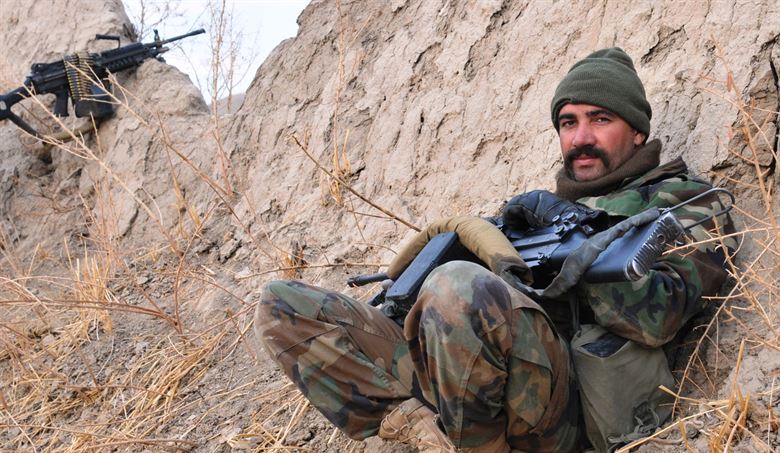Correlation: ACEs and PTSD

The following is a sample Paper 3 that looks at a correlational study. Below you will first find the stimulus piece, followed by the static questions. Potential answers are included in the hidden boxes below.
The study is adapted from: Carroll, T. D., Currier, J. M., Mccormick, W. H., & Drescher, K. D. (2017). Adverse childhood experiences and risk for suicidal behavior in male Iraq and Afghanistan veterans seeking PTSD treatment. Psychological Trauma: Theory, Research, Practice, and Policy, 9(5), 583–586. doi: 10.1037/tra0000250
Stimulus piece
Suicide is a leading cause of death for Iraq and Afghanistan Veterans with posttraumatic stress disorder. Carroll, Currier, and McCormick (2017) wanted to investigate the relationship between adverse childhood experiences (also known as ACE's) and suicide rates among war veterans. The research is important because it could serve as a predictor of PTSD-related suicide among military veterans.
The sample was made up of 217 veterans from the wars in Afghanistan and Iraq. All participants had been accepted to a residential PTSD program for veterans located on the West coast of the United States. All participants had a diagnosis of PTSD and had been in out-patient treatment, which had proven to be unsuccessful. Participants that suffered from psychosis, alcoholism or drug addiction, or long-term medical conditions were excluded from the sample.
Three questionnaires were used to gather data. The questionnaires were given in the first two weeks of treatment. Felitti et al's (1998) ACE Questionnaire measured exposure to childhood abuse, household dysfunction (e.g. parental divorce, family mental illness or domestic violence) and neglect. The responses were either a "yes" or "no" answer. They were also asked to complete the Combat Experiences Scale which quantified the level of stressors that they experienced in combat. Finally, they were given a two-item questionnaire in which they were asked, "Have you ever had serious thoughts of committing suicide?" and "Have you attempted suicide in your lifetime?" All data was anonymized using a coding system.
The findings were that 83.4% of the veterans reported at least one ACE. 41.5% had experienced four or more ACEs. 71.9% had serious thoughts of committing suicide and 38.7% indicated that they had attempted suicide. For every additional stressor on the ACE questionnaire, the veterans' risk of attempting suicide increased by 24%. When looking at individual ACEs rather than composite scores, the researchers found that physical neglect played the most significant role in predicting suicide attempts. Veterans that reported physical neglect in childhood were 4.55 times more likely to report a history of suicide attempts, than in cases where no physical neglect was reported.
Questions
1a. Identify the method used and outline two characteristics of the method.
1b. Describe the sampling method used in the study.
1c. Suggest an alternative or additional research method giving one reason for your choice.
One alternative method would be to carry out semi-structured interviews. This would allow the researcher to get more information about the nature of their childhood experience; rather than a "yes" or "no" response, the researchers could get more information about the frequency and intensity of the ACE that they experienced, perhaps providing further insight into their PTSD-related behaviour.
2. Describe the ethical considerations in reporting the results and explain additional ethical considerations that could be taken into account when applying the findings of the study.
3. Discuss the possibility of generalizing/transferring the findings of the study.
The sample size was rather large considering it was all taken from a single clinic. It would most likely be possible to generalize to the population of veterans attending the residential clinic, recognizing that certain groups were excluded from the sample.
As the study is a sample of opportunity, it makes it difficult to generalize to all war veterans with PTSD. First, all of the participants had all been unsuccessful in their previous treatment plan for PTSD. There may be some unidentified trait that separates these veterans from those that are successfully treated. In addition, there is not detail in the description about the social support that these vets have received. It may mean that marital status, sexuality or religious affiliation may also play a role in the study. As it does not appear that these confounding variables were controlled for in the study, this may limit the generalizability of the findings. In addition, not every war is the same. Veterans with PTSD from a war that is still going on, compared to a war that has been lost or won, may have different thoughts about the war which influence their PTSD. In addition, the American military is voluntary service, whereas in other countries, military service is often obligatory. This may also play a role in the mental health of the veterans.
Finally, culture could also play a role in the findings - both in the symptomology of PTSD which is different in different cultures and the attitude toward suicide, which in many cultures is "forbidden." In the US family size is smaller and often individuals lack social networks that can be supportive in times of crisis; whereas collectivistic societies may provide a network that can help individuals to cope with trauma.

 IB Docs (2) Team
IB Docs (2) Team
